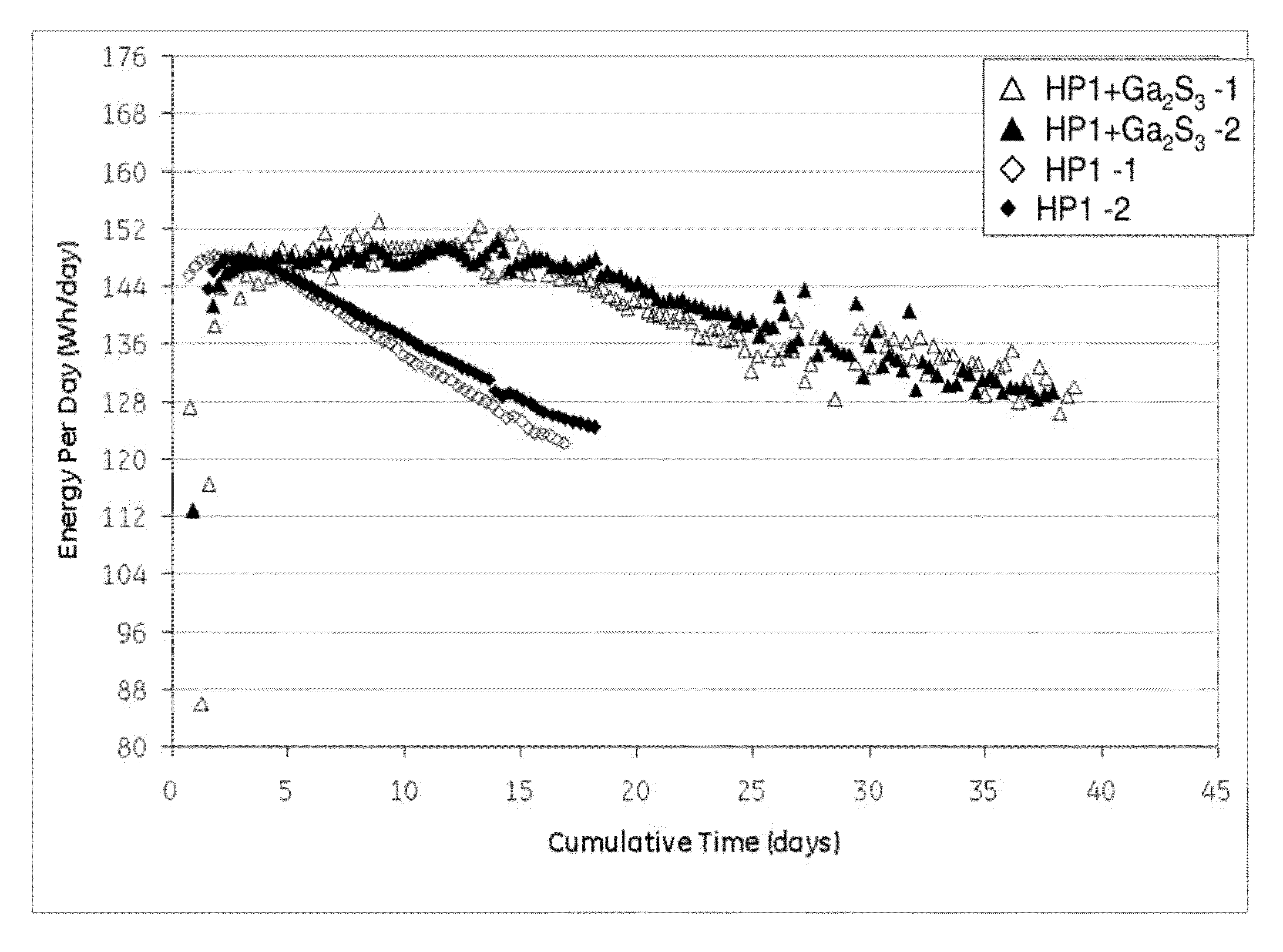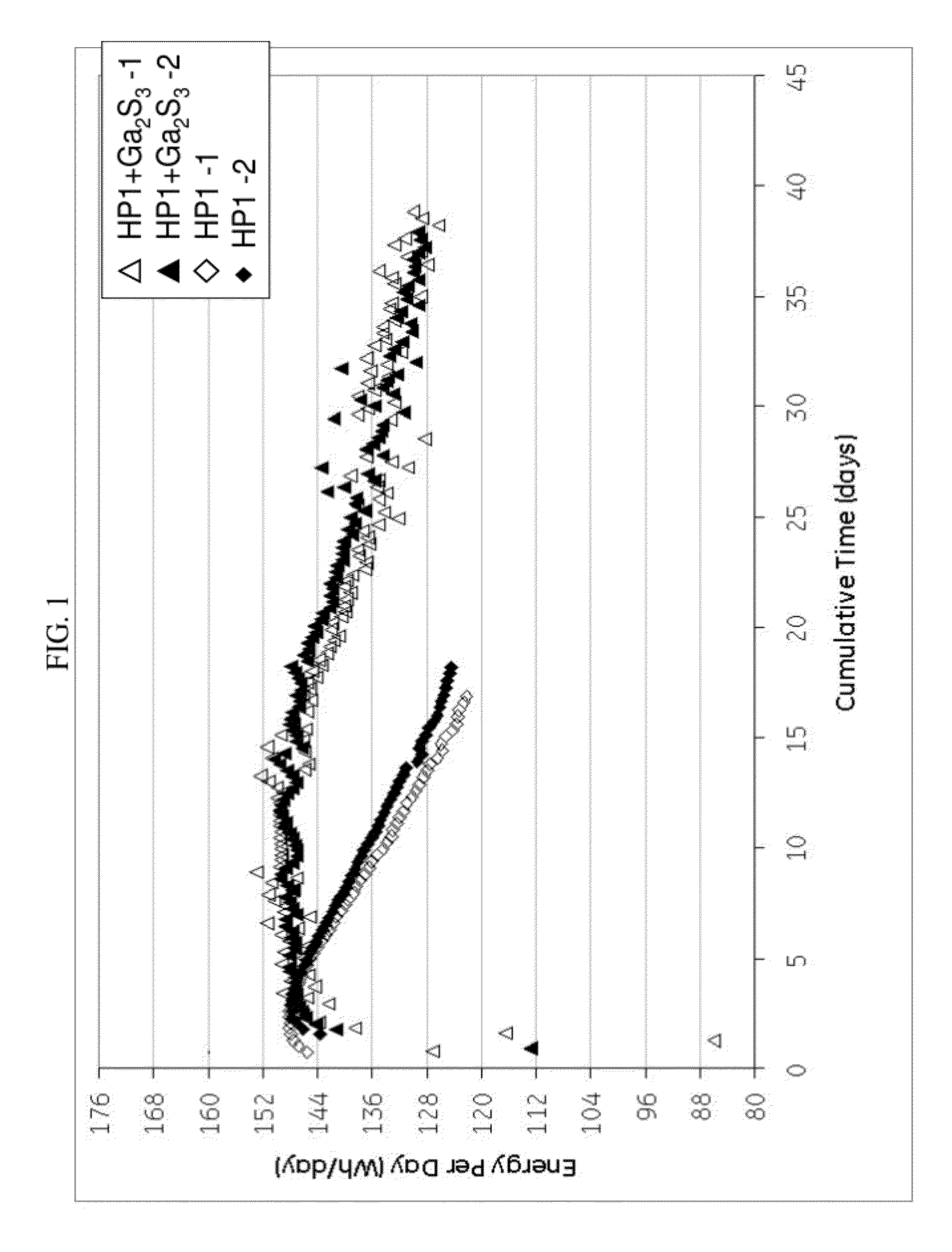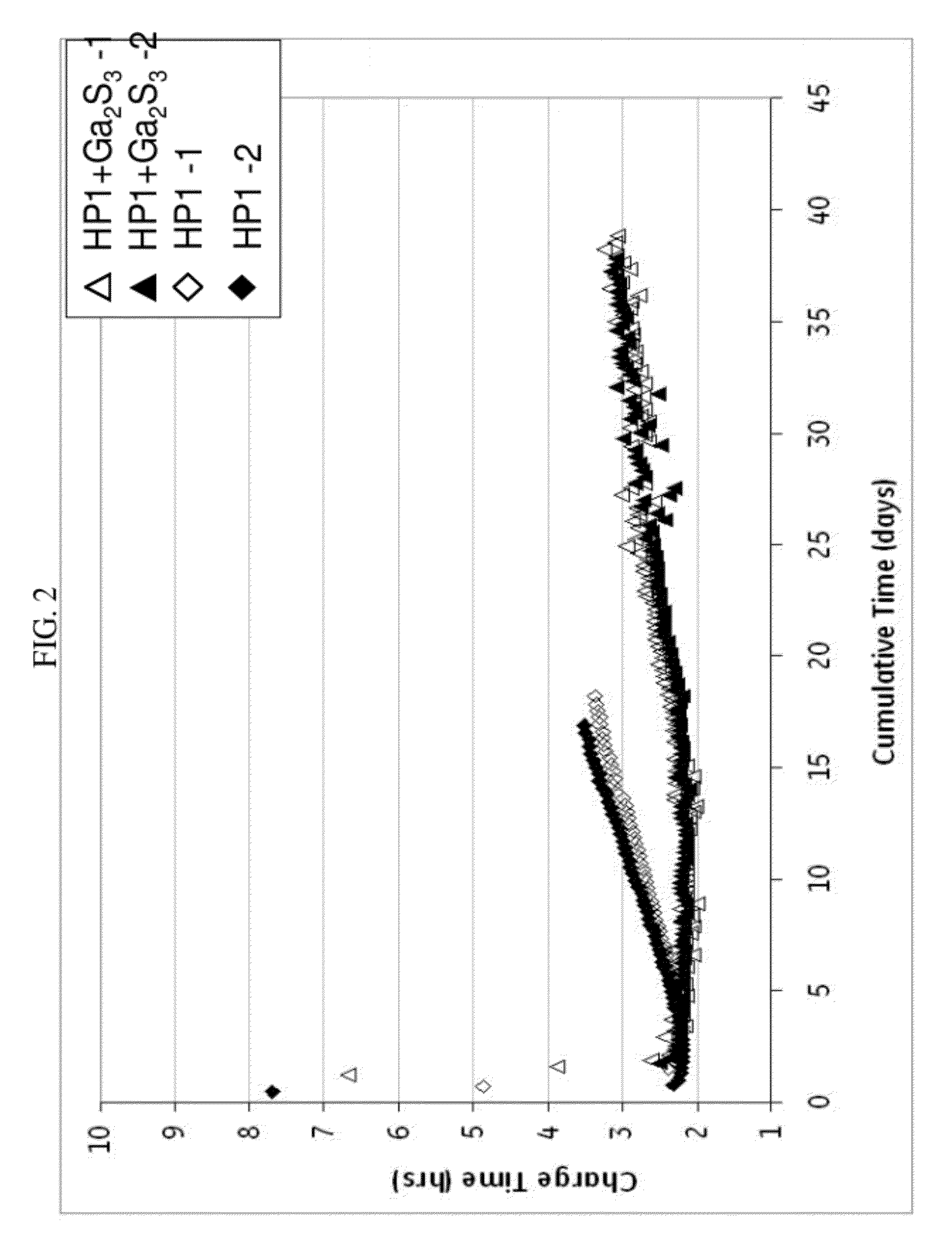Composition and energy storage device
- Summary
- Abstract
- Description
- Claims
- Application Information
AI Technical Summary
Problems solved by technology
Method used
Image
Examples
example 1
[0065]Cells with similar nickel / iron-sodium chloride cathodes containing no sulfide compound and those containing gallium sulfide were assembled and tested according to the Protocol A. The cathode compositions are shown in Table 1. The single cell test results are illustrated in FIG. 1 showing the energy per day (watt-hours per day (Wh / day)) versus cumulative time in days for a 40% depth of discharge (DoD) at 300° C. As can be seen, the samples with the gallium sulfide, after a period of 10 days, consistently showed a higher energy per day. By day 18 the cells with no gallium sulfide had decreased to less than 125 Wh / day, while the cells with gallium sulfide had an energy of greater than 144 Wh / day. Actually, even at 35 days, the cells with the gallium sulfide had an energy of greater than 128 Wh / day. In other words, the life of the cell was unexpectedly nearly doubled.
example 2
[0066]In FIG. 2, the charge time in hours for the same cells as in FIG. 1 was determined. Similar to FIG. 1, the cells comprising a cathode composition with gallium sulfide significantly outperformed the cells with a cathode composition without gallium sulfide. Here, the charge time reached over 3 hours for HP1 by day 14, but Ga2S3 did not reach a charge time of 3 hours until day 27, and not consistently until day 33. Furthermore, by day 18, HP1 had exceeded a charge time of 3.5 in one case and 3.3 in the other. Unexpectedly, Ga2S3, in more than 36 days, did not exceed 3.3 hours charge time. With the gallium sulfide in the cathode composition, a charge time of less than 3 hours can be maintained for greater than or equal to 20 days, and even greater than or equal to 25 days, and a charge time of less than 3.4 can be maintained for greater than or equal to 20 days, greater than or equal to 30 days, and even greater than or equal to 35 days.
example 3
[0067]Cells with similar nickel / iron-sodium chloride cathodes containing no sulfide compound and those containing antimony sulfide were assembled and tested according the Protocol A. The cathode compositions are shown in Table 1. The single cell test results are illustrated in FIG. 3 showing the energy per day (Wh / day) versus cumulative charge and discharge times in days for an 80% DoD at 300° C. As can be seen, the samples with the antimony sulfide, after a period of 10 days, consistently showed a higher energy per day under both 80% DoD. By day 25 the cells with no antimony sulfide had about 10 Wh / day lower energy than the cells with the antimony sulfide. In other words, the life of the cell was unexpectedly nearly doubled.
PUM
 Login to View More
Login to View More Abstract
Description
Claims
Application Information
 Login to View More
Login to View More - Generate Ideas
- Intellectual Property
- Life Sciences
- Materials
- Tech Scout
- Unparalleled Data Quality
- Higher Quality Content
- 60% Fewer Hallucinations
Browse by: Latest US Patents, China's latest patents, Technical Efficacy Thesaurus, Application Domain, Technology Topic, Popular Technical Reports.
© 2025 PatSnap. All rights reserved.Legal|Privacy policy|Modern Slavery Act Transparency Statement|Sitemap|About US| Contact US: help@patsnap.com



